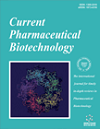-
oa Editorial [Hot Topic: Drugs and Pregnancy (Guest Editor: Zaneta Kimber-Trojnar)]
- Source: Current Pharmaceutical Biotechnology, Volume 12, Issue 5, May 2011, p. 705 - 706
-
- 01 May 2011
Abstract
This special international issue of ‘Current Pharmaceutical Biotechnology’, entitled “Drugs and pregnancy”, contains review articles on subjects concerning various molecular and pharmacological aspects of current obstetrics. In utero the fetus is exposed to a wide variety of foreign chemicals, which can enter via the transplacental transport. This exposure is commonly due to maternal medications, lifestyle factors, and environmental sources. As Holcberg and his co-writers note, it has become clear that almost any drug or chemical substance administered to the mother is able to cross the placenta to some extent, unless it is metabolized or altered during passage, or else its molecular size and low lipid solubility do not allow transplacental transfer. A number of transport systems have been identified in the placenta, which recognizes a wide variety of pharmacological active drugs as substrates. The authors focus on the main placental transporters, i.e. P-glycoprotein, breast cancer resistance protein, multidrug resistance associated protein transporters, organic anion transporters, organic anion transporting polypeptides, monoamine transporters, and organic cation transporters. Detailed understanding of the molecular mechanisms employed in the transplacental transfer of the drug and of the various polymorphisms of drug transporters across the placental barrier is essential for the optimization of pharmacotherapy during pregnancy, and for controlling fetal drug exposure. Stejskalova and Pavek summarize the recent findings related to the function of the cytochrome P450 1A1 enzyme (CYP1A1) and aryl hydrocarbon receptor (AhR) in the human placenta during pregnancy. CYP1A1, an enzyme of the cytochrome P450 superfamily, is the most important xenobiotic-metabolizing enzyme of the placenta, the expression of which is transcriptionally up-regulated through the ligand-activated AhR. CYP1A1 metabolizes several drugs and compounds widely used in pharmacotherapy or which are present in diets. At the same time, this enzyme plays a key role in the bioactivation of procarcinogens and proteratogens, such as arylamines and polycyclic aromatic hydrocarbons, which bind to placental and fetal DNA as DNA-adducts. The authors stress the fact that elevated CYP1A1 activity through activated AhR in the placentas of women smokers has been associated with pregnancy complications, such as premature birth, intrauterine growth retardation, structural abnormalities, fetal death or placenta abruption. During the past decade there has been an explosion in the number of nanoparticulate drugs or drug delivery systems being explored, developed and marketed for the treatment and prevention of human diseases. Nanoparticulate delivery systems offer a potential avenue for delivering therapeutics to maternal tissues with minimal risk of incidental fetal exposure, depending on the ability of the nanoparticle in question to cross the placenta. The limited studies on this topic show considerable uncertainty regarding the transplacental passage of nanoparticles, and the understanding of the criteria that determine transferability is poor. Keelan and his research group examine the evidence relating to the potential toxicity of nanoparticles in pregnancy, the ability of the placenta to take up and transfer nanoparticles to the fetus, and the theoretical benefits and risks of the administration of nanoparticle-based therapeutics in pregnancy. Poniedzialek-Czajkowska et al. present the theoretical background and significance of nitric oxide (NO) in normal and preeclamptic pregnancy, as well as considering how NO donors could be useful in clinical practice. Many studies have been devoted to establishing the role of this key molecule in perinatal medicine, and the different findings have promoted the clinical use of NO donors as new pharmacological tools. It has been shown to participate in the extravillous trophoblast invasion of the decidua and myometrium, in the regulation of the vascular reactivity of utero-placental and fetal-placental circulations, in the prevention of platelet and neutrophil aggregation and adhesion in the intervillous space, and in trophoblast apoptosis. Due to a variety of common medical conditions in women of reproductive age (i.e. allergy, asthma, collagen vascular diseases, inflammatory bowel disease) glucocorticoids (GSs) are used. Furthermore, approximately 7% 322x22x of pregnant women in Europe and North America are treated with synthetic GSs to promote lung maturation in fetuses at risk of preterm delivery. The metabolism of GSs during pregnancy, and their changes in the placenta which affect fetal development, are analyzed by Marciniak et al. The theme of prevention and the management of allergic asthma and anaphylactic reactions during pregnancy is considered by Markert and his international research group. The pharmacokinetic characteristics and the US Food and Drug Administration (FDA) classification of conventional anti-allergic drugs, and the immunological implications of immunotherapy, are summarized. The authors conclude that anti-inflammatory and pro-resolving mediators, including lipoxins, resolvins and protectins, as well as nutritional factors, such as omega-3 long-chain polyunsaturated fatty acid, may have the potential to prevent allergies in newborns....


